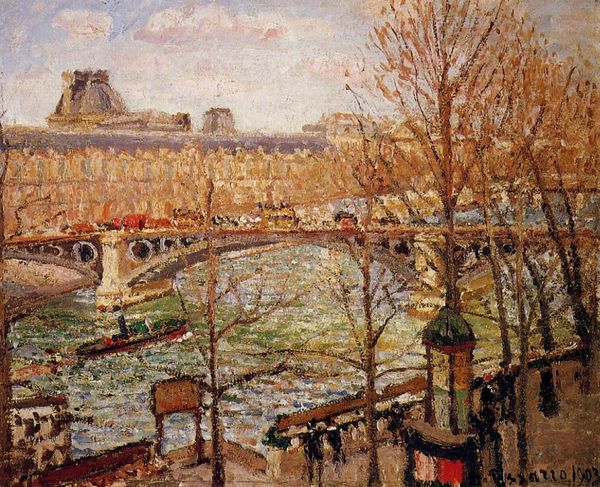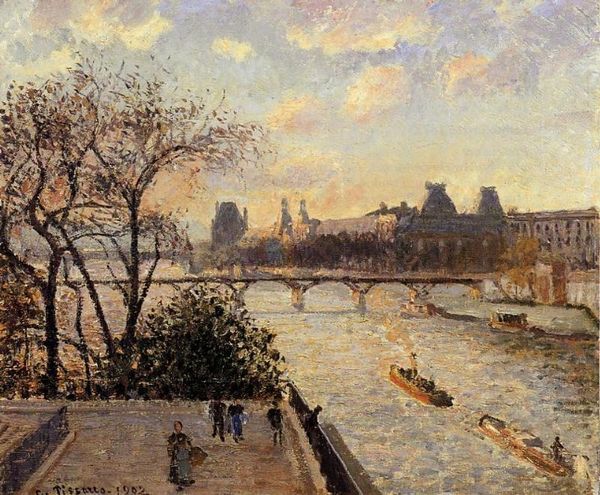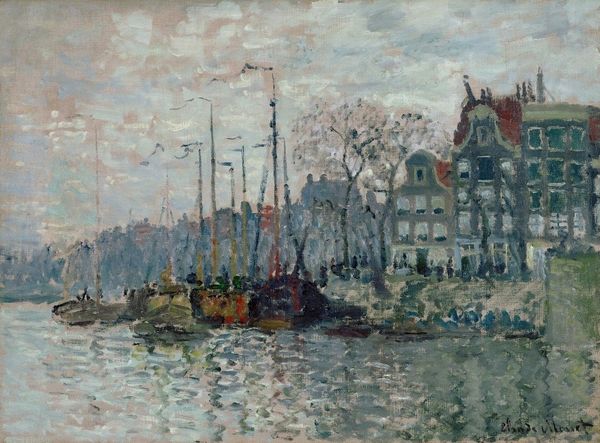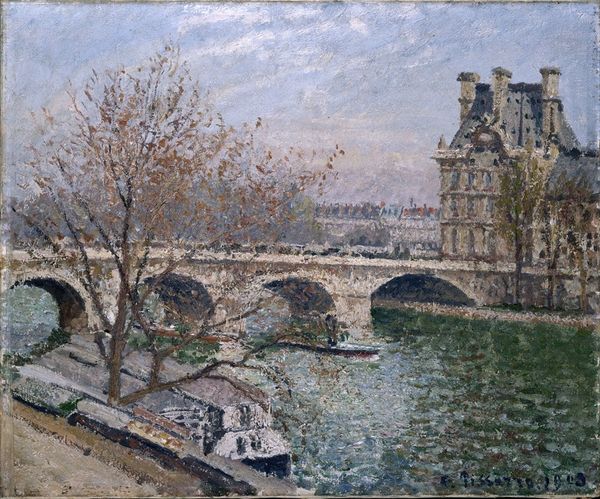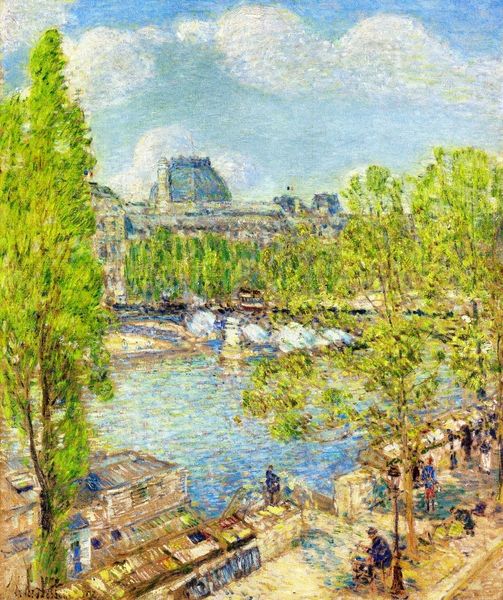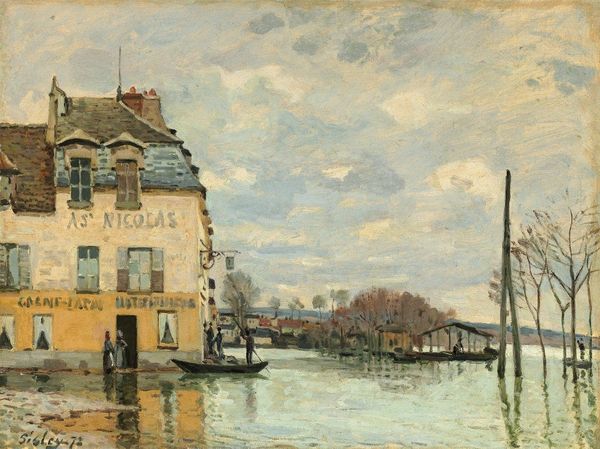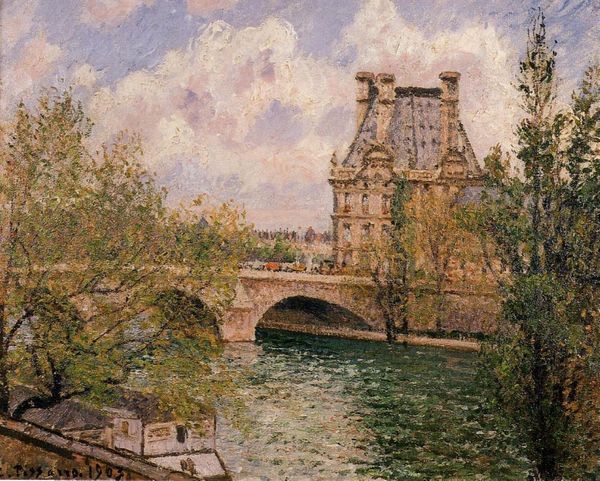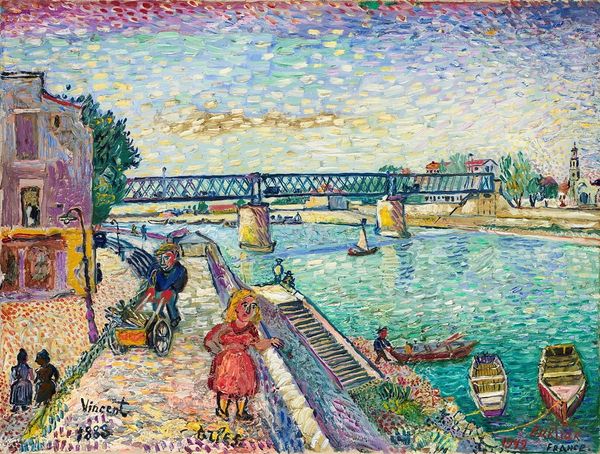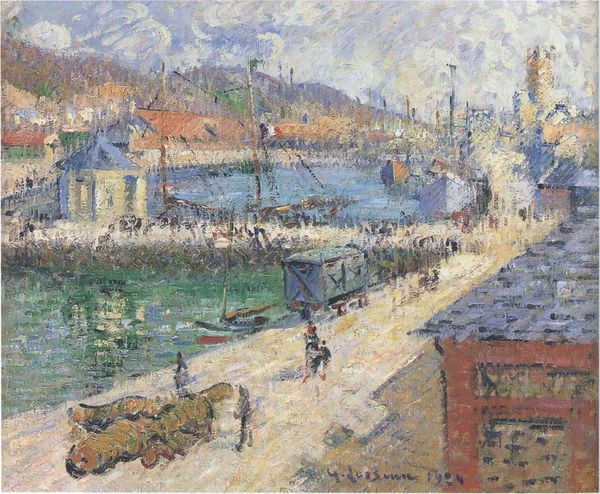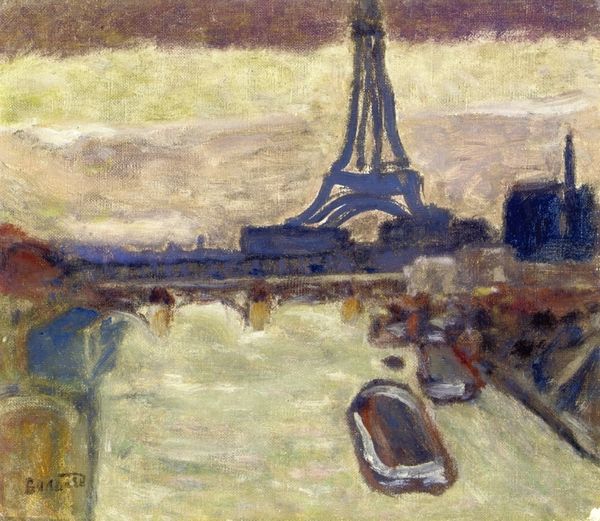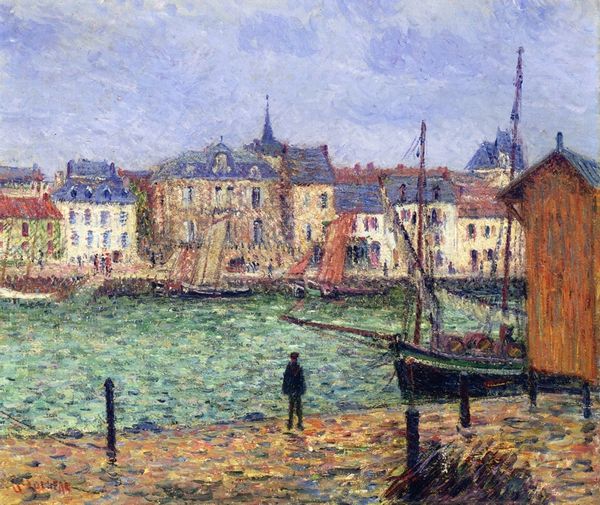
Dimensions: overall: 46 x 53.6 cm (18 1/8 x 21 1/8 in.) framed: 68.6 x 75.6 x 4.4 cm (27 x 29 3/4 x 1 3/4 in.)
Copyright: National Gallery of Art: CC0 1.0
Curator: Looking at this canvas, one is struck by the muted tones, almost monochromatic in its palette. The architectural forms seem to emerge and recede in the hazy light, quite subdued. Editor: Exactly. It’s Utrillo’s “The Pont Saint-Michel, Paris,” dating circa 1908. Notice the texture – impasto strokes, thickly applied. Utrillo, infamous for the "white period," but early on in his creative process, worked with oils, focusing intensely on rendering Parisian life with a clear recognition for his social context and material process. Curator: True. There's a palpable weight to the paint, which translates into a heaviness in the atmosphere, particularly in those leaden skies and the murky water. The perspective, too, feels slightly distorted, contributing to a sense of unease, what is it really expressing beyond representing what the artist sees. Editor: Perhaps his struggle with mental health manifested in this way. The layers of paint mimic the city’s social strata, built upon layers of history and labor. One could imagine the artist himself present, grappling with issues of identity, mental health, as well as what role labour takes within artistic expression. The flags hint at a national pride perhaps tinged with ambivalence. What kind of labour allows for such creation. Curator: An interesting perspective. While that may certainly hold contextual water, formally speaking, observe how Utrillo plays with the verticality of the flagpoles, mirroring them with the verticals of the buildings, creating a subtle rhythm which is interrupted by the dynamism of the waves and the reflections of light in the water. Semiotically, one can start thinking of nationhood through a very individual subjective lense. Editor: Still, thinking of what material means—a focus on production reveals the city’s evolution through the physical application of materials in his artwork. The artwork gives itself to a consideration of a social and material construct, where, inevitably, nation is constructed. The materiality speaks. Curator: Yes. It speaks of impasto, certainly, and muted tonalities. Well, this dialogue gives much food for further thinking about the intersection of life and materiality. Editor: Agreed. These different modes of seeing complement one another so we have a fuller picture.
Comments
No comments
Be the first to comment and join the conversation on the ultimate creative platform.
